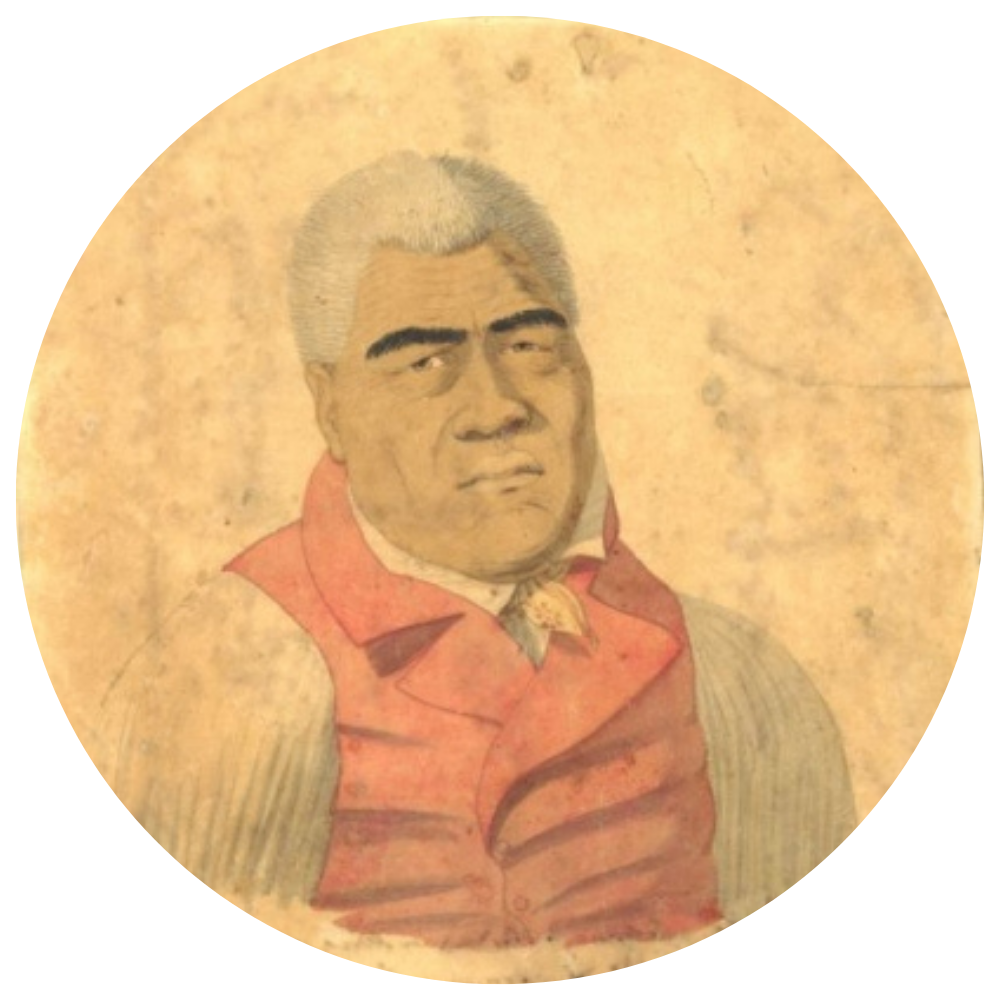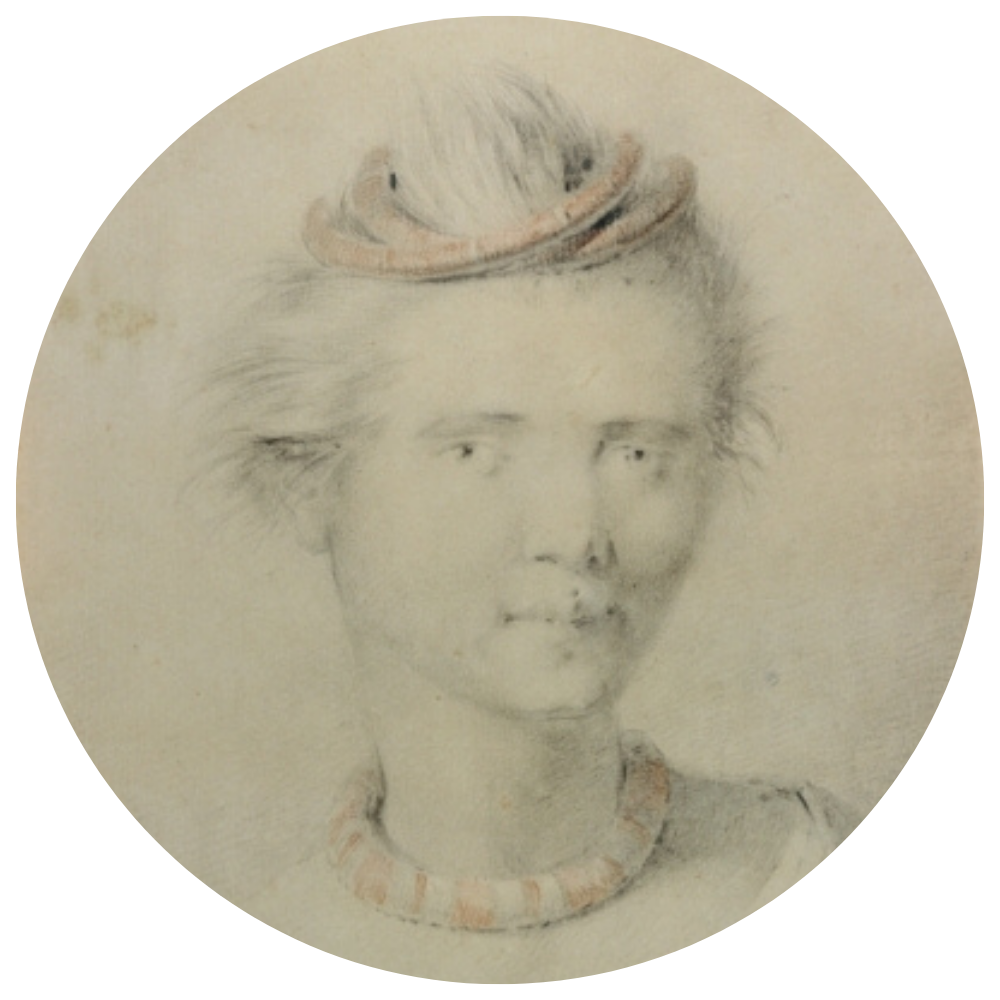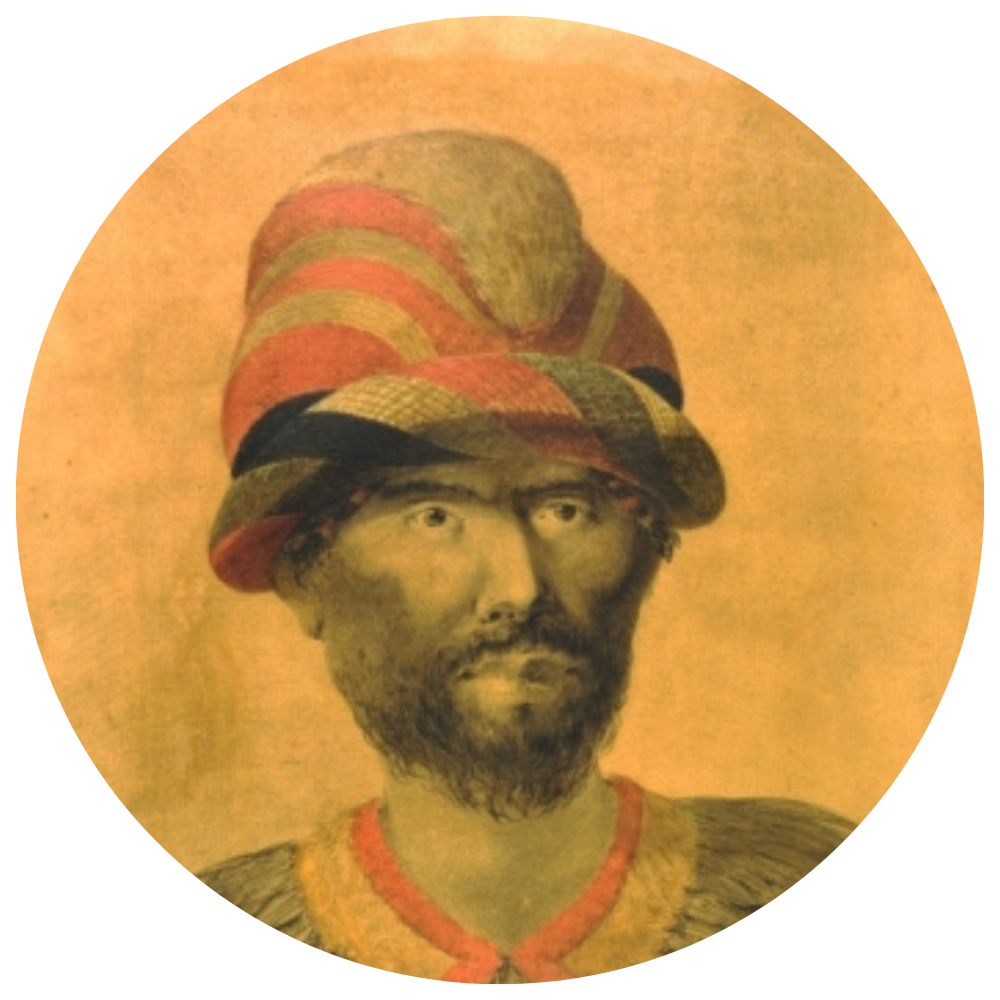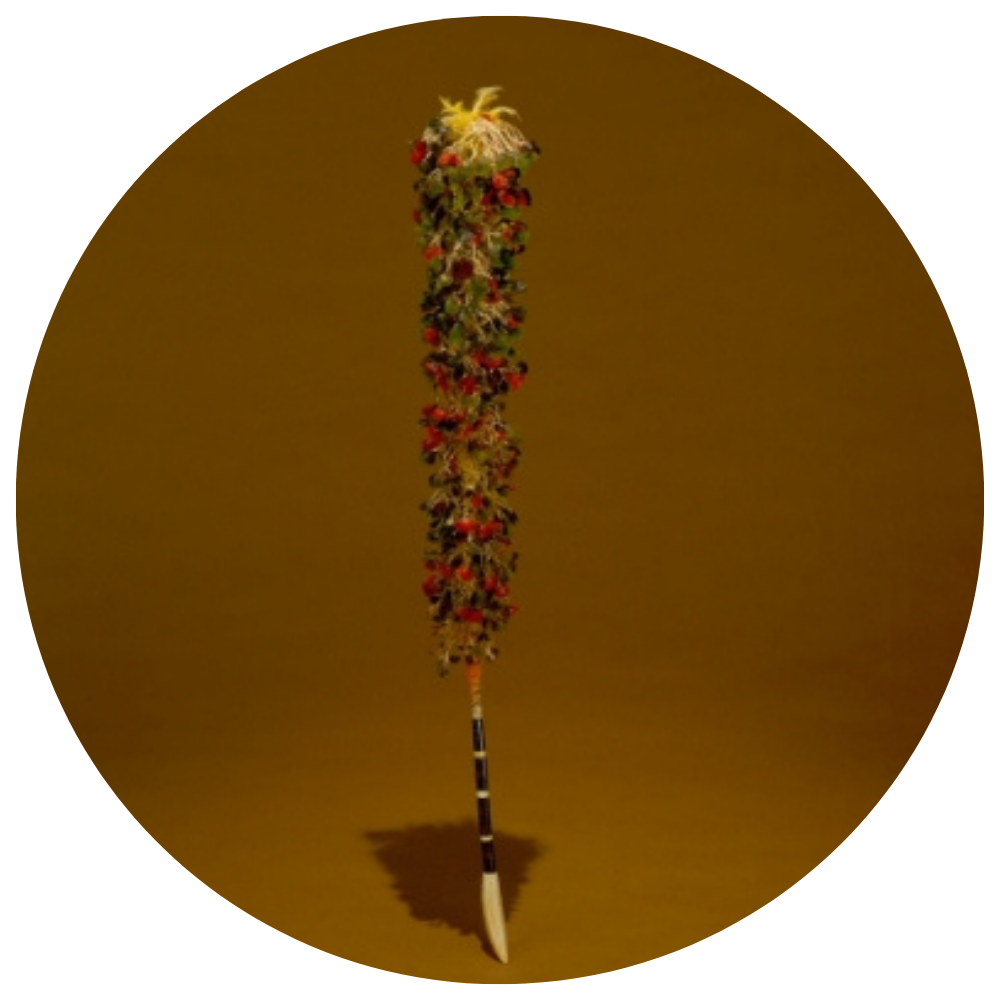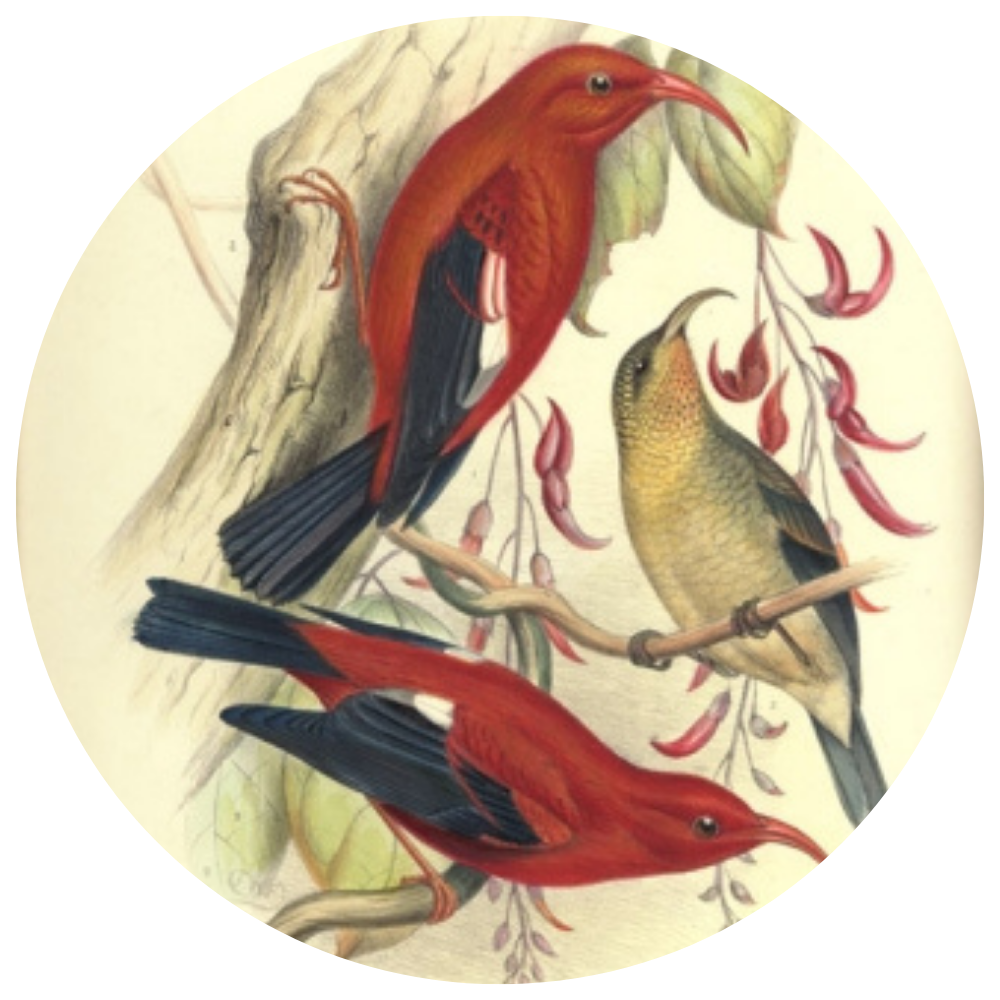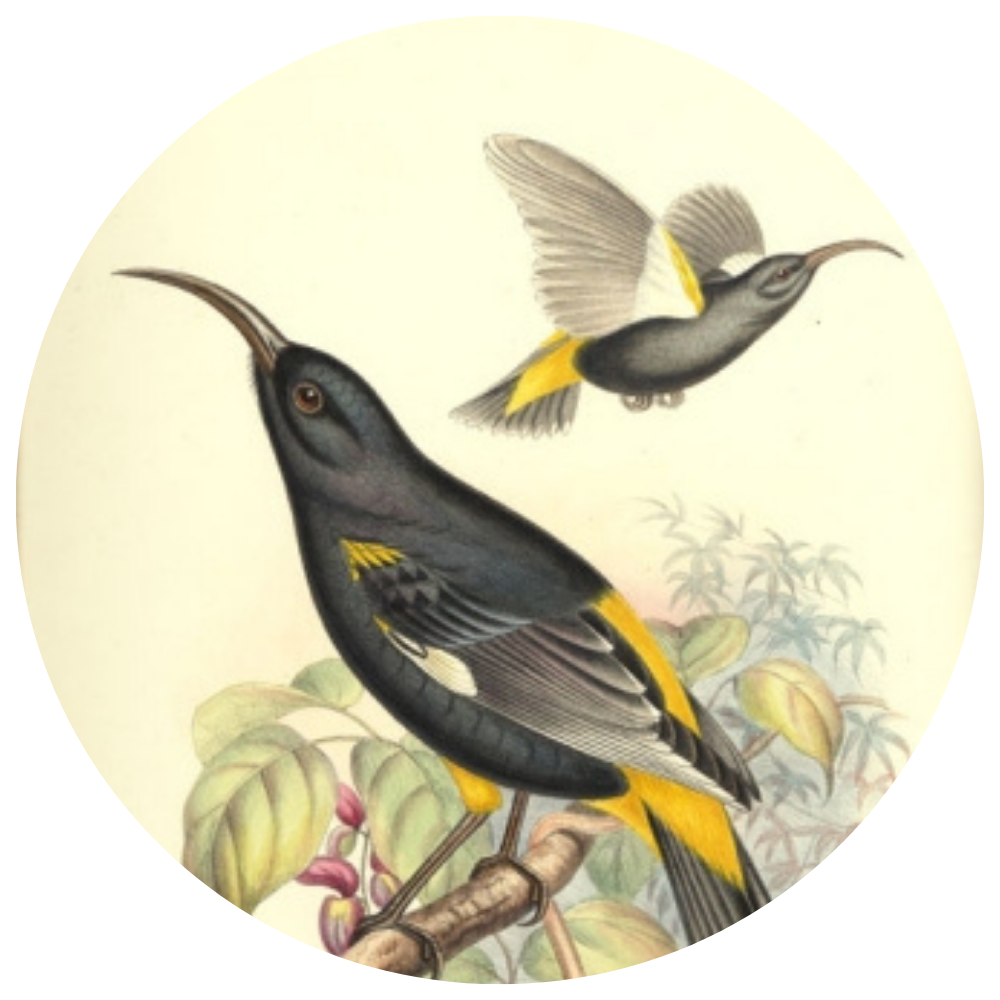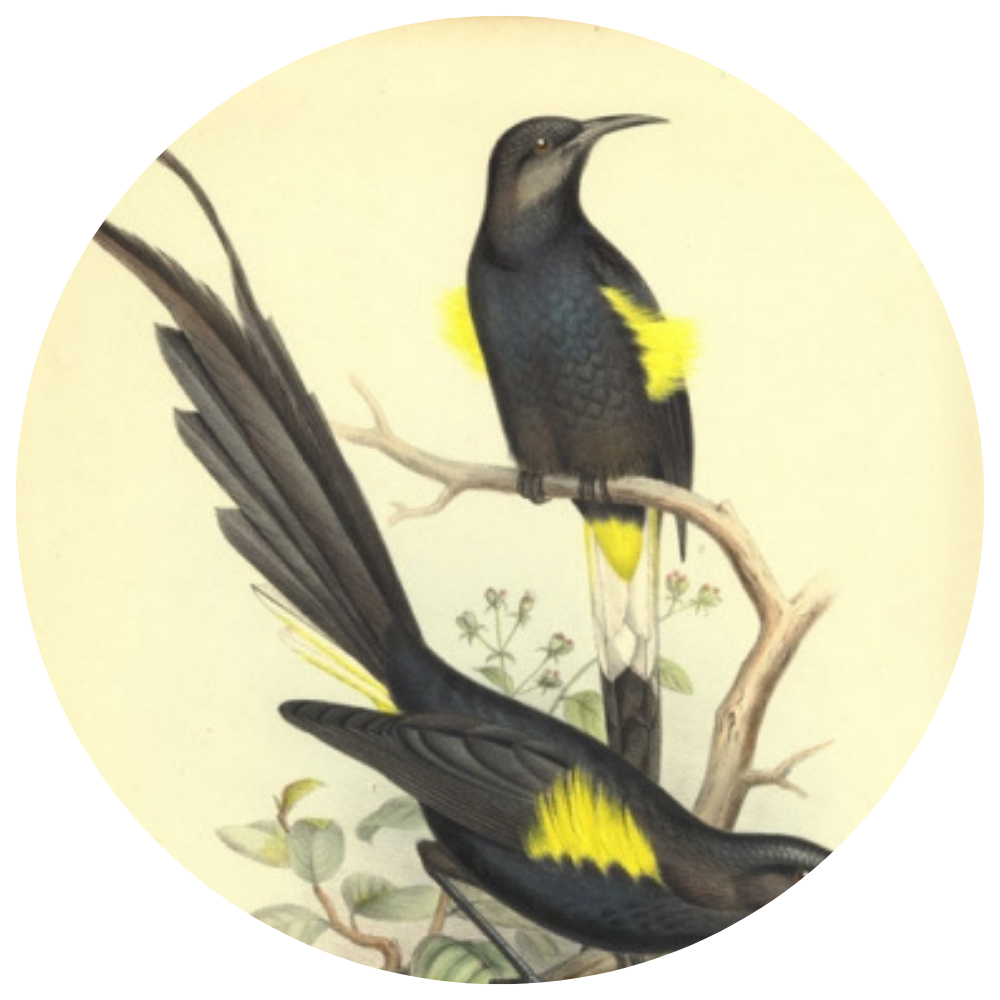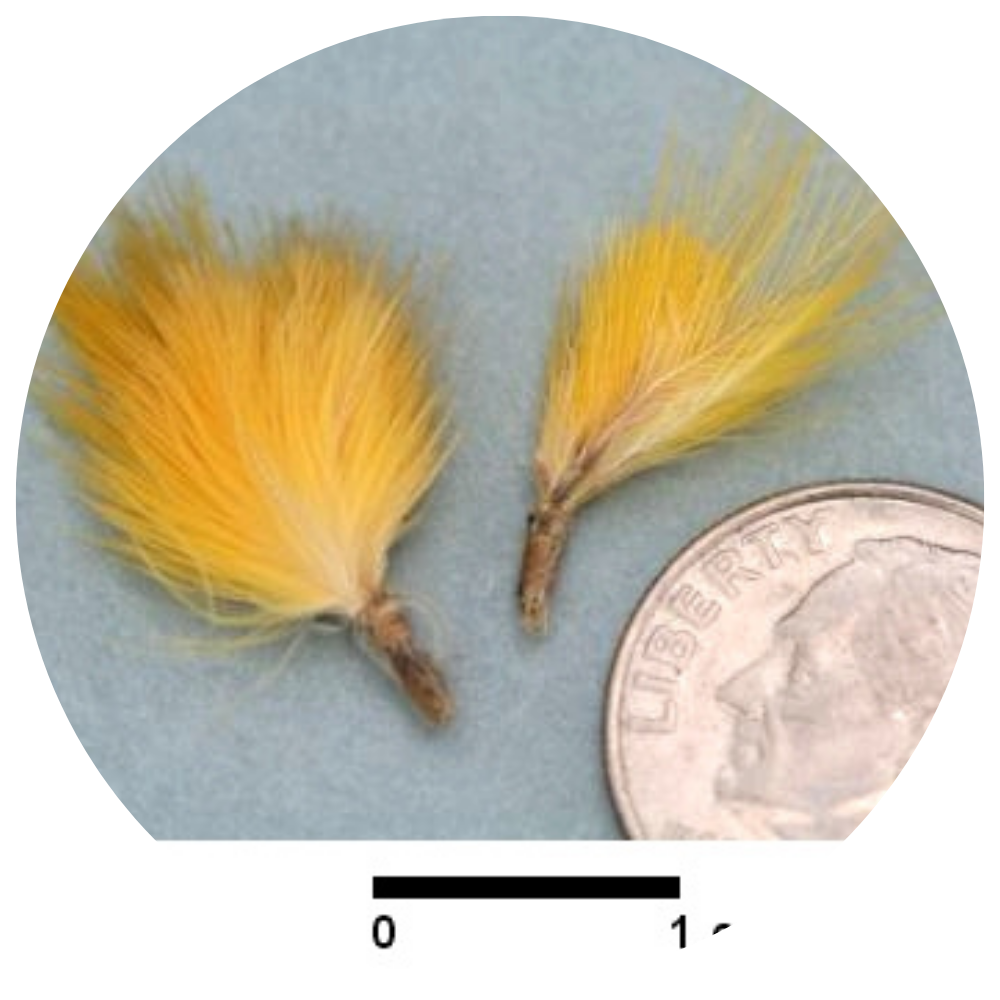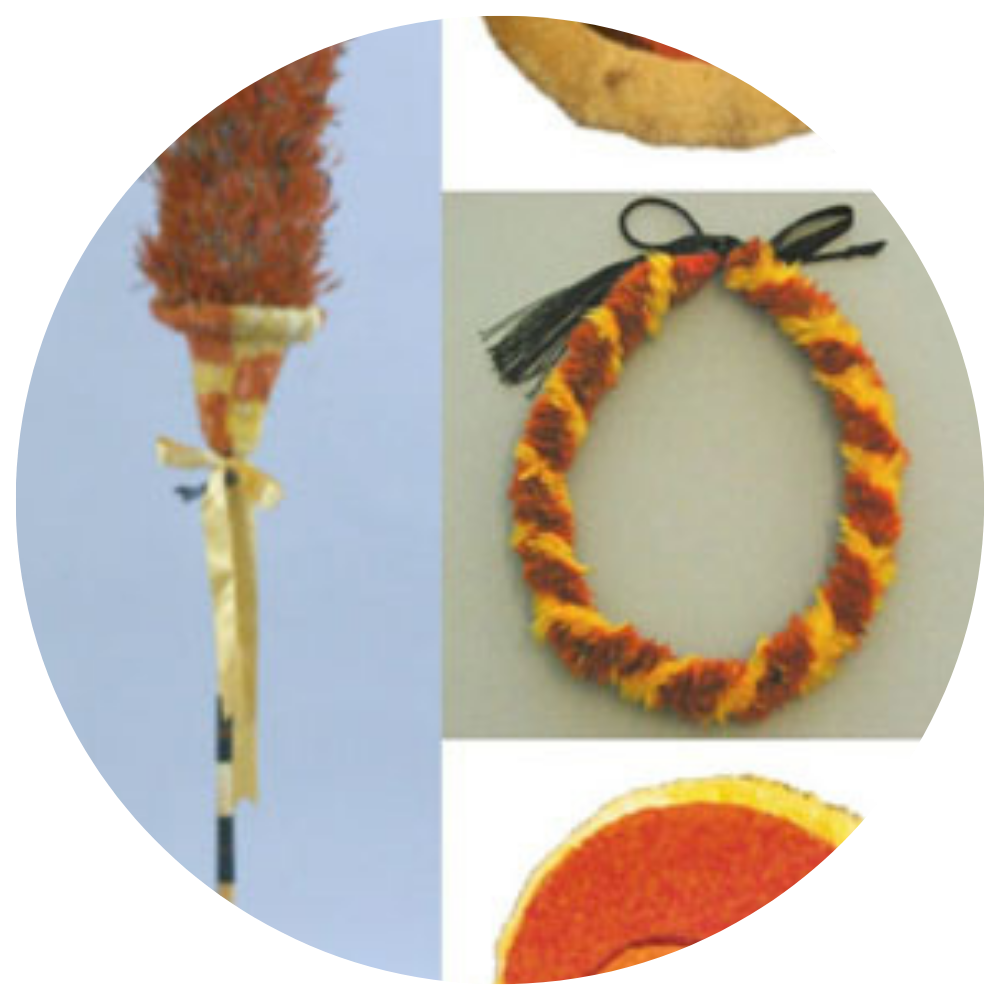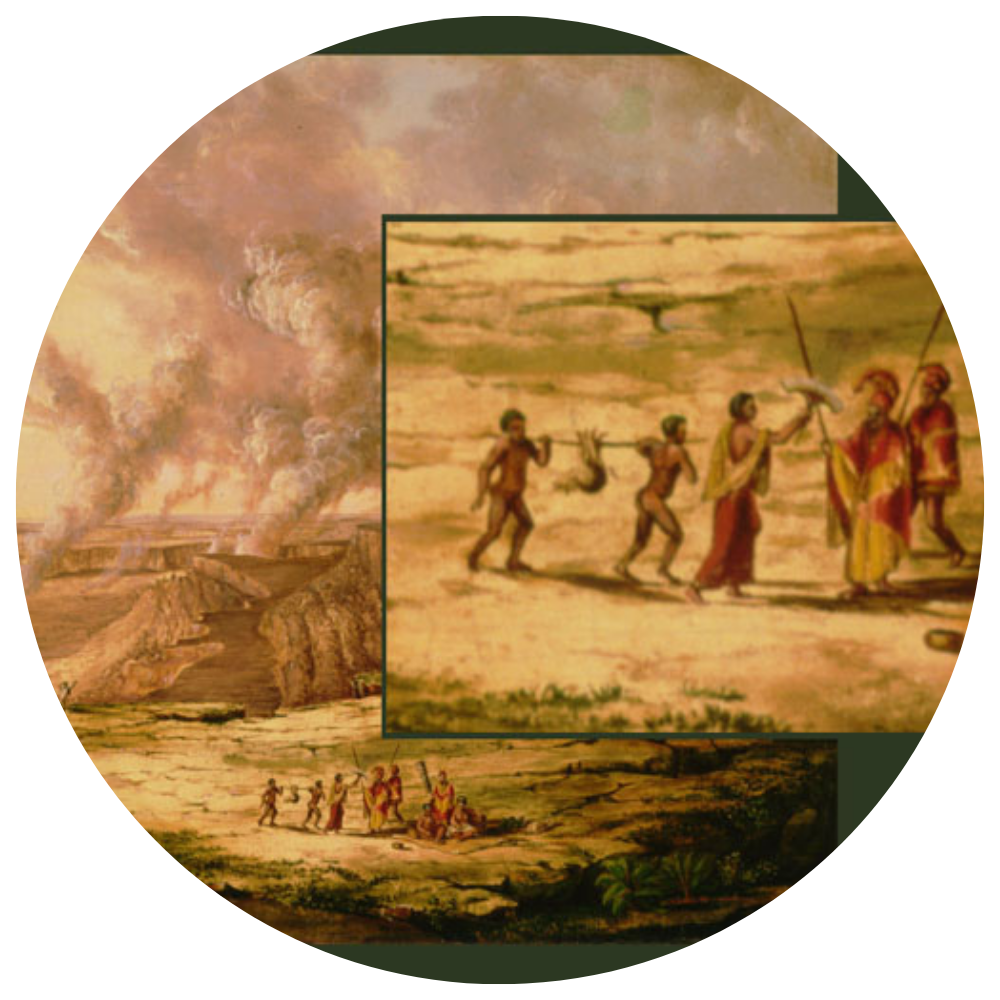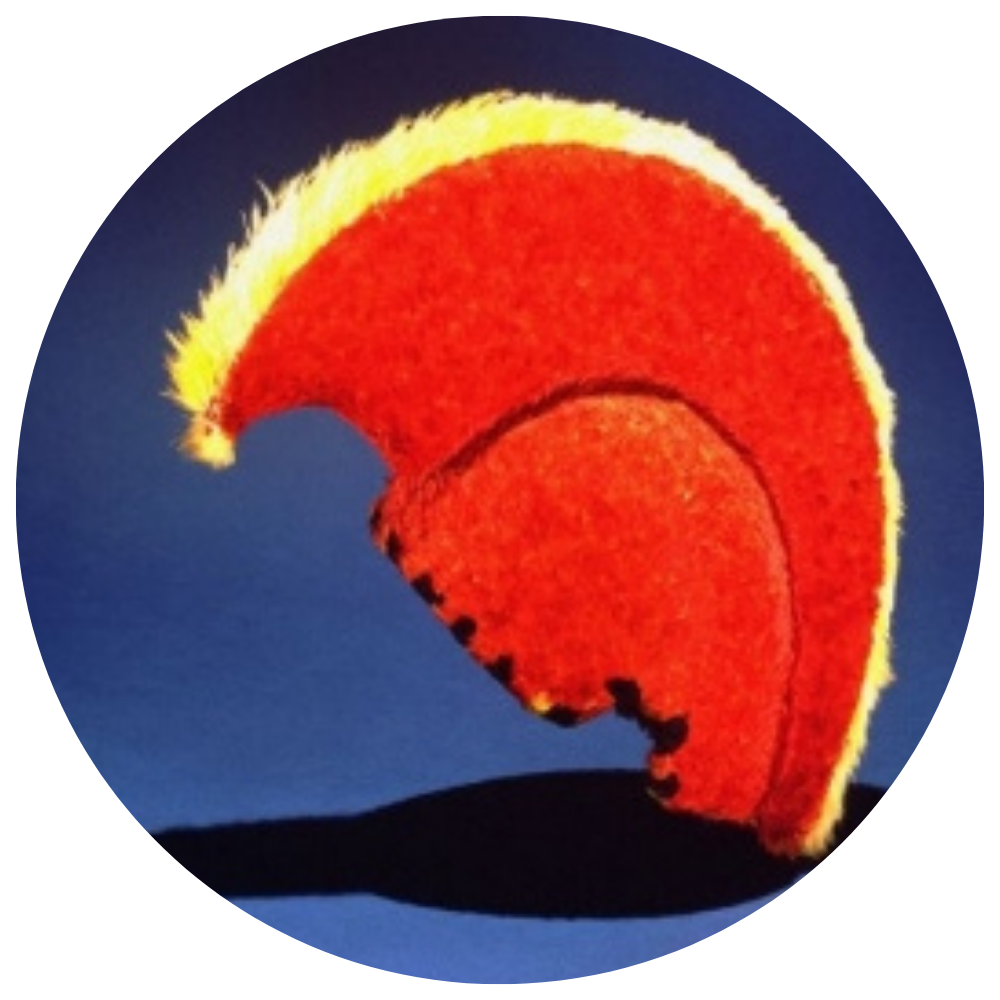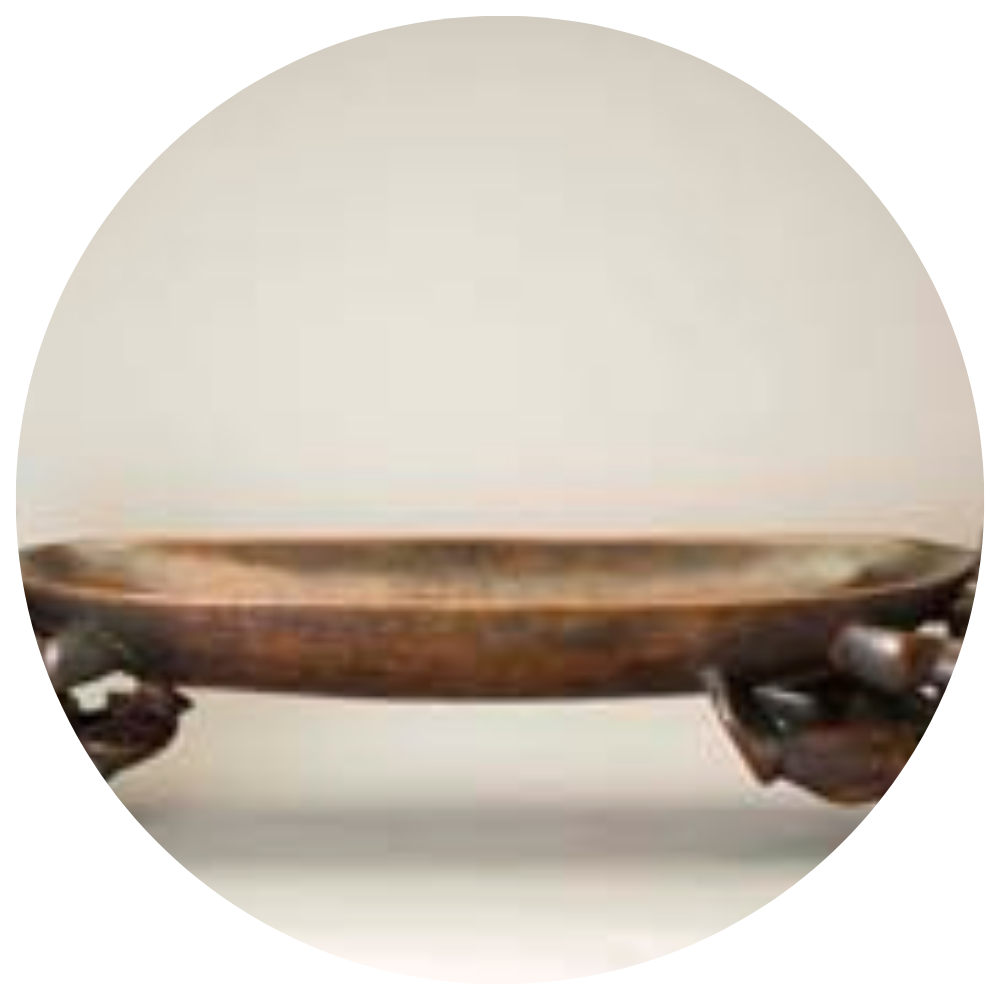ʻAhuʻula of King Kamehameha I

Kānaka Maoli have long created featherwork of amazing skill and artistry. These items were worn in battle and different state affairs to signify rank. The capes, and other feathered articles like cloaks, helmets and kāhili were treasured items of the ali‘i. Though featherwork was also found in other parts of Polynesia like Tahiti and Aotearoa (New Zealand), the main features of the Hawaiian technique were unique.
Hawaiian feather capes and cloaks were constructed by tying bundles of small feathers, usually 6-10 per bundle, to a foundation of netting. This netting was made from an endemic plant that produced one of the strongest fibers in the world, olonā (Touchardia latifolia). This olonā foundation could range from a very fine netting to a more coarsely woven foundation that would hold the feathers. Tens of thousands of feather bundles were connected, creating a visually striking garment. These capes and cloaks were important signifiers of rank, and as noble regalia, they were to be worn only by the ali‘i nui. Red, as a traditional color of royalty in Polynesia, was a dominant color. Yellow, made valuable by its scarcity, was also oft used.
A great majority of feathers used in making these articles came from endemic birds, like the Hawaiian Honeycreepers. The ‘i‘iwi (Vestiaria coccinea) and the ‘apapane (Himatione sanguinea) supplied the vast amount of red feathers while the more rare ‘ō‘ō (Moho nobilis) and mamo (Drepanis pacifica) provided the cherished yellow. The ‘ahu‘ula of Kamehameha consists of approximately 450,000 of these yellow feathers of the mamo bird, found only on Hawai‘i Island.
Feathers for these amazing works were procured by bird catchers, who often lived deep in the wao kele (upland forest) habitat of the birds that they sought. One technique called kahekahe, involved pruning branches of the ‘ōhi‘a tree of most of its flowers and gumming the branch near the remaining flowers with the sticky sap of the ‘ulu (breadfruit). When the bird, attracted by the nectar of the ‘ōhi‘a blossom, alighted on the branch it became stuck and easy to catch. Care was often taken in removing the feathers from the bird, and salve applied to help the bird heal. Rare birds especially were seen as a sacred resource. David Malo wrote in the Hawaiian–language newspaper Ka Hae Hawaii that Kamehameha himself had forbidden bird-catchers from taking the life of the birds so as to allow his children in the future to experience the beauty of these wonderful birds.*
*Ka Hae Hawaii. November 3, 1858.
Location: Bishop Museum
Origin: Hawai‘i
Collection: Provisional Government Collection
Call Number: E. C. Hawaiian. Art. Featherwork. Cloaks.
Artifact Number: 06828


